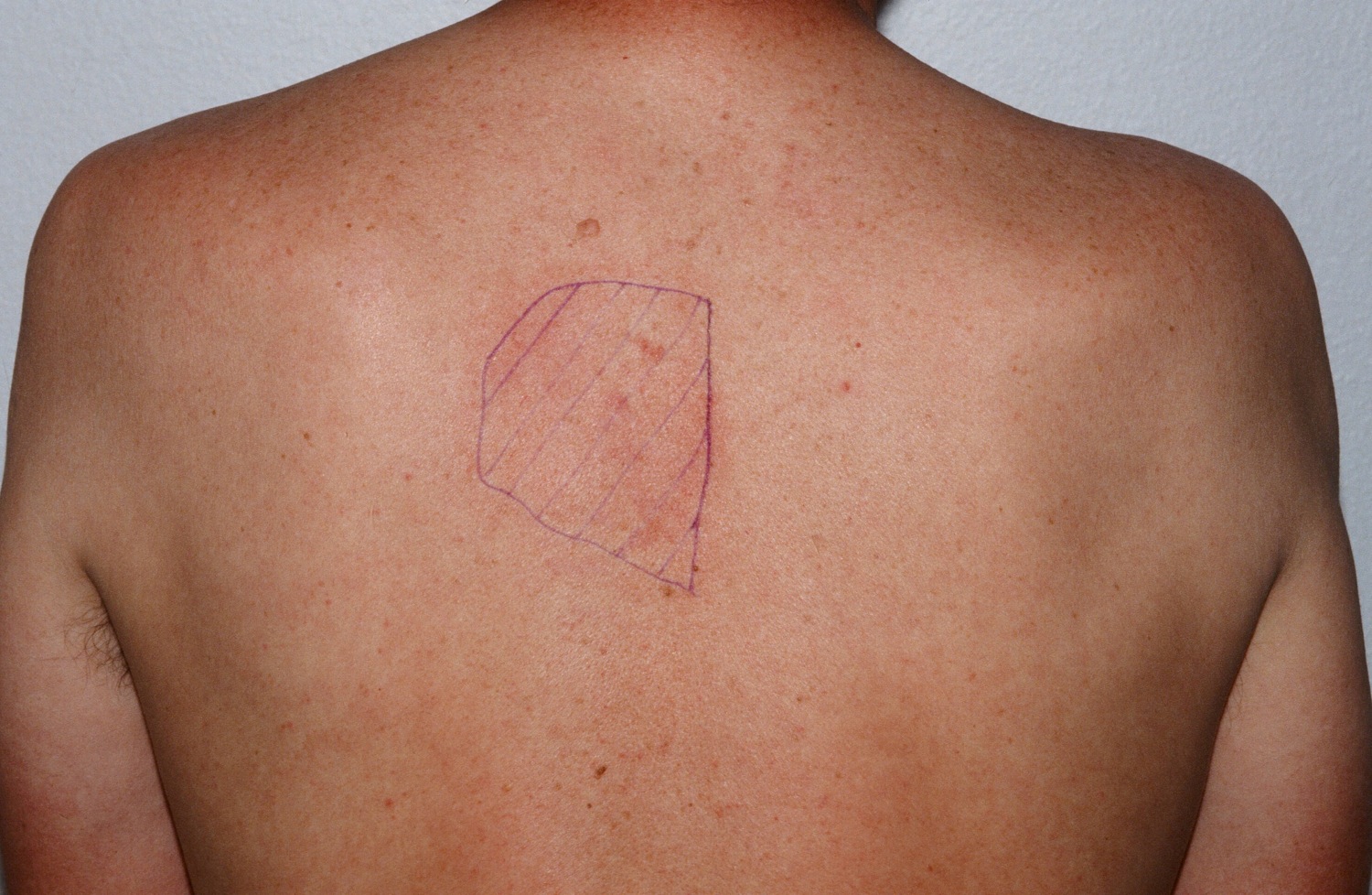Having a dark patch of itchy skin on the upper back is a condition known as notalgia paresthtica. The itchiness occurs because of the nerve cells at skin level are not working properly; this is called sensory neuropathy. If there is a lot of scratching and rubbing, the skin in the affected area will change.
What Causes Notalgia Paresthetica?
The nerves which surround the spinal cord are the nerves that allow for you to have feeling, or experience sensations on your upper back. These nerves run from the second to the sixth thoracic segments and through the muscles of your back. Notalgia paresthetica may be caused by various injuries to the nerves that run along the spinal cord.
Since these nerves are extremely vulnerable to traction and compression, injuries such as back injury, shingles, sunburn, myelopathy, and small fiber neuropathy may be the cause of notalgia paraesthetica.
Who’s at Risk?
Although notalgia paresthetica is most common in middle-aged to older women, it may affect people of all ages. Age, race, and sex do not affect whether or not you have itchy shoulder blades.
Due to the body’s changes as one gets older, it is more likely that the spine will begin to press on the nerves causing them to lose a bit of sensation, which causes the itchy feeling. However if you injure your spine or upper back, your spine may begin to press on your nerves leaving you with an itching sensation at any age.
Symptoms of Notalgia Paresthetica

Most of the time, there are not any visible signs of notalgia paresthetica, it is mainly an itching sensation. The only visible sign may be a dark patch of skin, known as hyperpigmentation within the affected area.
When looking for signs and symptoms of notalgia paresthetica, your doctor will look on your upper back in between your shoulder blades. This is the most common location; however it may also present itself in the middle of your upper back near the spinal column. Over time other symptoms such as pain, tingling, or a change of sensation in the affected area may occur.
Treatments for Notalgia Paresthetica
Since the itchy sensation, known as notalgia paresthetica, is caused by pressed nerves, the only true cure is surgery to remove the spine from the nerve. However, there are many options for treating the ailment so that you can live an itch free life.
Home Remedies
Having dry skin will often cause an itching sensation; one of the best ways to prevent this is to use a moisturizing lotion. Applying the lotion 2-3 times a day will help keep your skin moist while preventing the itchiness that comes with dry skin.
When moisturizing lotions are not working, you can try an over-the-counter cream called capsaicin which is made from hot pepper extract. Be sure that you follow the directions on the package. Some may experience immediate relief while others may not feel the full effect for up to 6 weeks.
When neither of these options is working, or if they stop working, it is time to visit your doctor.
Prescription Treatments
When you visit your doctor, he or she will ask you a serious of questions as they evaluate your condition. In more severe cases, they may even complete an X-ray exam, MRI, or CT scan.
Once they diagnose your condition as being notalgia paresthetica, there are many treatments that they begin trying. Most likely they will start with a prescription strength anesthetic cream or corticosteroid cream.
If those do not work and your pain begins to interfere with your daily routines, your doctor may change your prescription to an oral anti-seizure, epileptic, or convulsant such as Gabapentin, Topiramate, or Oxcarbazepine.
If none of these stronger approaches stop your itching sensation, then it may be time to move on to other medical treatments.
Other Medical Treatments
Through the whole process of determining which treatment is best at relieving your symptoms, it is important that you continue to communicate with your doctor. Your doctor will be able to analyze how you and your body are reacting to the treatments. If they see that none of the other methods are working, they will be able to determine which more aggressive treatment needs to be implemented.
When the itching symptoms are severe enough, and other treatments are not working, your doctor may recommend an anesthetic injection near the compressed nerves where they exit the spine (paravertebral block), or they may even recommend spine surgery. Both of these methods are focused more on the nerves themselves than relieving the symptoms.
